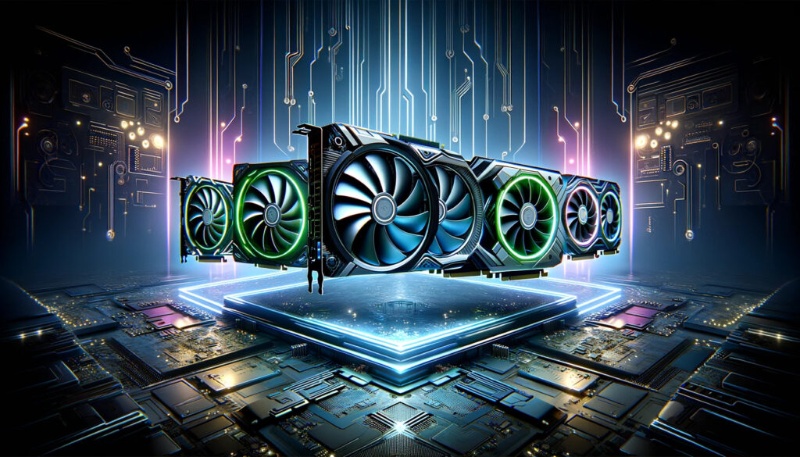I. Introduction: The True Meaning of “Affordable” in AI
Every AI startup and enterprise team knows the drill. You have a groundbreaking model to train, a tight deadline, and a budget that’s already stretched thin. The immediate reaction is to search for the “best affordable GPU.” You compare prices on NVIDIA’s latest offerings, looking for that magic combination of high performance and a low upfront cost. It feels like a smart, fiscally responsible move.
But here’s the hard truth: in the world of AI, this initial purchase price is often a mirage. It’s a small part of a much larger, more complex financial picture. The real expense of AI development isn’t just the silicon you buy; it’s everything that happens after. It’s the hours of GPU time wasted due to inefficient cluster management. It’s the sky-high cloud bills from underutilized resources. It’s the valuable engineering time spent wrestling with driver compatibility and infrastructure instead of refining algorithms. It’s the cost of a project delayed because you couldn’t afford to scale up for a critical training run.
What if you could redefine what “affordable” means for your AI projects? What if affordability wasn’t about finding the cheapest piece of hardware, but about extracting the maximum possible value from every computational dollar you spend? This is the smarter approach. This is where WhaleFlux comes in. WhaleFlux is an intelligent GPU resource management tool designed specifically for AI enterprises. We redefine affordability by ensuring that your investments in NVIDIA GPUs—whether you rent or own them—are utilized with unparalleled efficiency, directly lowering your cloud costs and accelerating your time-to-market.
II. What Does “Best Affordable GPU” Really Mean for AI Teams?
To make a truly smart decision, we need to move beyond the sticker price and look at three core concepts that define real value in AI computation.
A. Performance per Dollar: The True Benchmark
For AI teams, a GPU isn’t a trophy; it’s a tool. Its value is measured by the work it can do for the money you pay. This is best captured by “performance per dollar.” Think of it as computational mileage. How many teraflops (TFLOPS)—a measure of computing speed—do you get for each dollar spent? A GPU with a lower initial price might seem like a steal, but if it takes three weeks to train a model that a more powerful card could handle in one week, the “affordable” option has just cost you two weeks of developer time, delayed your product launch, and consumed more in electricity. The true cost of a GPU is inverse to its productivity.
B. Total Cost of Ownership (TCO): The Hidden Iceberg
The purchase price is just the tip of the iceberg. The Total Cost of Ownership (TCO) is the massive structure hidden beneath the surface. For a physical GPU, TCO includes:
Power and Cooling:
High-performance GPUs are energy-hungry and generate significant heat, leading to substantial electricity bills and specialized cooling requirements.
Physical Space:
Data center racks are expensive real estate.
Maintenance and Repairs:
Hardware fails. Diagnosing, repairing, or replacing a faulty GPU means downtime and more cost.
The Human Cost:
This is often the most overlooked factor. The salary hours your DevOps and MLOps teams spend building, maintaining, and troubleshooting your GPU cluster are a direct financial drain. Every hour they spend on infrastructure is an hour they are not spending on core AI development.
C. Strategic Access over Outright Purchase
For many projects, especially those with variable workloads or in the R&D phase, full ownership may not be the most cost-effective path. The ability to access the right GPU for the right job at the right time is a powerful financial strategy. Instead of sinking capital into a fixed hardware setup that may be overkill for some tasks and underpowered for others, flexible access allows you to align your computational expenses directly with your project pipeline. This converts a large, fixed capital expenditure (CapEx) into a predictable, manageable operational expense (OpEx), which is a far more agile and often more “affordable” approach for growing businesses.
III. WhaleFlux: Your Gateway to Truly Affordable NVIDIA GPU Power
So, how do you achieve this smarter, more holistic form of affordability? The answer lies not in a single GPU model, but in a platform that optimizes your entire GPU strategy. That platform is WhaleFlux.
A. Access a Fleet of High-Performance NVIDIA GPUs
With WhaleFlux, you are not limited to a single “affordable” GPU. We provide on-demand access to a full fleet of high-performance NVIDIA GPUs, including the flagship NVIDIA H100 and H200for the most demanding LLM training, the proven NVIDIA A100 for a wide range of enterprise AI workloads, and the incredibly powerful NVIDIA RTX 4090 for high-speed prototyping and inference. This means you can tackle any project, from initial concept to full-scale production, without the massive capital expenditure typically required to build such a versatile hardware arsenal.
B. The Rental Model for Optimal Affordability
Our rental model is the cornerstone of making top-tier hardware accessible. Need several A100sfor a two-month training sprint? Or an RTX 4090 to prototype a new model architecture? With WhaleFlux, you can rent this power precisely when you need it. Our commitment is designed for serious development, with a minimum rental period of one month. This strikes the perfect balance between flexibility and cost-efficiency, preventing the wastefulness of hourly models while still allowing you to scale resources up or down with your project cycle. You pay for what you use, converting unpredictable, fixed costs into a streamlined, variable expense.
C. Maximizing Every Dollar with Intelligent Management
This is where WhaleFlux truly redefines affordability. It’s not just about providing access to hardware; it’s about ensuring that hardware works as hard as possible for you. WhaleFlux is an intelligent resource management tool at its core. Our software optimizes the utilization efficiency of every GPU in your cluster, automatically allocating workloads to avoid idle resources and bottlenecks. By ensuring that every rented or purchased GPU is used to its fullest potential, we drastically reduce waste. This intelligent management is the ultimate form of cost savings—it’s what turns expensive hardware into a truly affordable, high-return investment.
IV. Case in Point: Leveraging Powerful NVIDIA GPUs Affordably
Let’s make this concrete with two scenarios that are familiar to almost every AI team.
A. Cost-Effective Prototyping with RTX 4090
Imagine a small team at a med-tech startup developing a new diagnostic model. They need substantial power for prototyping but don’t have the budget or justification to purchase a data-center-grade GPU outright. Instead of settling for a less powerful card that slows down their iteration cycle, they rent a single NVIDIA RTX 4090 through WhaleFlux for one month. This gives them the computational muscle to rapidly experiment, debug, and validate their model. The cost is a predictable monthly fee. Once the model is validated and they secure funding for larger-scale training, they can seamlessly scale up within the WhaleFlux ecosystem, having avoided a major capital outlay at the most uncertain stage of their project.
B. Scaling Seamlessly to H100 or A100 Clusters
Now, consider a generative AI startup that has landed a major client. They need to fine-tune a massive language model, a task that requires a cluster of multiple H100 or A100 GPUs for several weeks. Purchasing this hardware is prohibitively expensive and logistically slow. Through WhaleFlux, they can instantly rent a dedicated cluster of these high-end GPUs for the exact duration of the project. They deliver for their client on time, generate revenue, and only pay for the hardware for the time they used it. The WhaleFlux platform manages the cluster complexity, so their team stays focused on the model, not the machinery. This is affordability through strategic, empowered scaling.
C. The Bottom Line
In both cases, WhaleFlux made powerful NVIDIA GPUs “affordable” not by lowering their price tag, but by providing flexible, efficient, and managed access. It lowered the barrier to entry, allowing innovation to proceed unhindered by traditional financial and operational constraints.
V. Conclusion: Rethink Affordability, Accelerate Innovation
The quest for the “best affordable GPU” is a noble one, but it’s time to broaden our perspective. True affordability in AI is not found on a price comparison website. It is achieved through total value, operational efficiency, and strategic flexibility. It’s about minimizing waste—both in hardware cycles and human hours—to ensure every dollar you spend on computation directly fuels your innovation.
WhaleFlux is built to deliver on this modern definition of affordability. We provide optimized access to the right NVIDIA hardware for your needs, coupled with the intelligent management that slashes cloud costs and accelerates project timelines. We turn GPU infrastructure from a capital-intensive bottleneck into a dynamic, scalable advantage.
Are you ready to see what your AI projects could achieve with a truly affordable GPU strategy? Don’t just look at the sticker price. We encourage you to calculate your true Total Cost of Ownership and explore how WhaleFlux’s rental and purchase options for NVIDIA GPUs can make your ambitions more achievable. Visit our website to learn more and discover how we can help you power your next breakthrough, without breaking the bank.

